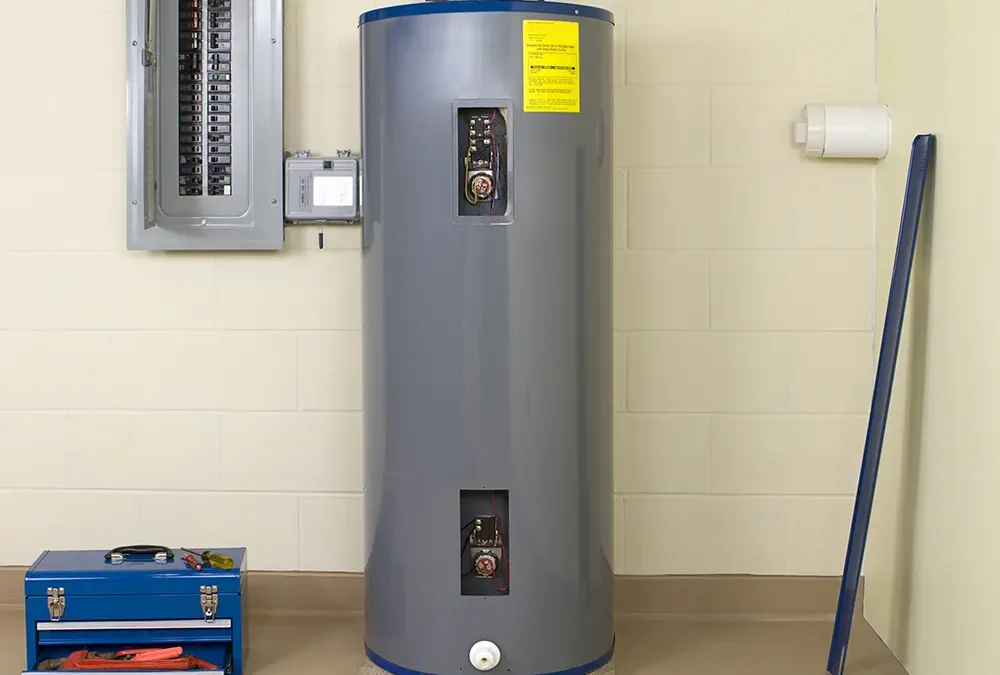Your water heater is one of the most important appliances in your home, providing hot water for showers, dishes, and laundry. Like any major appliance, it needs regular maintenance to ensure that it runs efficiently and lasts as long as possible. Neglecting water heater maintenance can lead to reduced efficiency, higher energy bills, or even system failure. Fortunately, keeping your water heater in good shape doesn’t have to be complicated. Here are some simple tips to help you maintain your water heater and extend its lifespan.
1. Check the Temperature Setting
One of the easiest maintenance steps is to check and adjust your water heater’s temperature. Manufacturers usually set the thermostat at 140°F (60°C) by default, but most homes don’t need it to be that high. Lowering the temperature to around 120°F (49°C) can prevent scalding, reduce energy consumption, and prevent mineral buildup. Keeping the temperature at a reasonable level also reduces the stress on the water heater and extends its life.
2. Flush the Tank Annually
Over time, sediment (such as minerals, rust, and debris) can accumulate at the bottom of the water heater’s tank, especially in areas with hard water. This sediment can cause your water heater to work harder, reducing its efficiency and lifespan. To prevent this, it’s important to flush your tank at least once a year.
Here’s how to flush your water heater:
1. **Turn off the power** to the water heater (if it’s electric) or set the gas control to “pilot” mode (for gas heaters).
2. **Turn off the cold water supply** that feeds into the heater.
3. Attach a hose to the drain valve at the bottom of the tank and run the hose to a floor drain or outside.
4. Open the valve and let the water (and sediment) drain out until the tank is empty.
5. Close the valve, remove the hose, and turn the water and power back on.
This simple process helps remove built-up sediment, which can improve your water heater’s performance and extend its life.
3. Test the Pressure Relief Valve
The temperature and pressure relief (T&P) valve is a safety feature that prevents the tank from overheating or building up excessive pressure. It’s important to test this valve regularly to make sure it’s functioning properly.
To test the T&P valve:
1. **Turn off the power** to the water heater.
2. **Place a bucket** under the discharge pipe connected to the T&P valve.
3. **Lift the valve’s lever** to release a small amount of water, then let it snap back into place. If water continues to flow out after releasing the valve, it may be faulty and will need to be replaced.
4. If the valve does not release water when lifted, it’s likely stuck and should be replaced by a professional.
Testing the valve ensures that your water heater remains safe and prevents dangerous pressure buildup.
4. Inspect the Anode Rod
The anode rod is a sacrificial metal rod inside your water heater that attracts corrosive elements, preventing them from rusting the tank itself. Over time, the anode rod will corrode and need to be replaced to continue protecting the tank from rust and corrosion.
To inspect the anode rod:
1. **Turn off the power** and water supply to the heater.
2. **Locate the anode rod**, which is typically at the top of the water heater.
3. Unscrew and remove the rod for inspection.
4. If the rod is less than 1/2 inch thick or is coated with calcium deposits, it should be replaced.
By replacing a worn-out anode rod, you can help prevent premature tank failure and extend the life of your water heater.
5. Insulate the Tank and Pipes
Insulating your water heater and the pipes connected to it can help reduce heat loss and improve efficiency. Water heaters, especially older models, can lose heat even when they’re not in use, causing them to work harder to maintain the desired temperature. By adding insulation, you can reduce standby heat loss and save energy.
- For the water heater tank: Use a water heater insulation blanket, which can be found at most hardware stores. Just be sure not to cover the thermostat or the top of gas water heaters.
- For the pipes: Insulate the hot water pipes with foam insulation sleeves to reduce heat loss and prevent the pipes from freezing in colder weather.
This simple step can make a big difference in your water heater’s efficiency and help you save on energy bills.
6. Check for Leaks
Periodically checking your water heater for leaks can help you catch small problems before they turn into major issues. Inspect the area around your water heater for any signs of water pooling or moisture. Also, check the connections at the top of the tank (where the water pipes enter) and the bottom drain valve.
If you notice any leaks, it’s important to address them immediately. Some leaks can be repaired with simple tightening, while others may indicate a more serious problem, such as corrosion in the tank, which could require professional attention.
7. Turn the Water Heater Off When on Vacation
If you’re planning to be away from home for an extended period, it’s a good idea to turn off your water heater or set it to vacation mode (if available). Most modern water heaters have a vacation setting that lowers the temperature while you’re away, saving energy without completely shutting off the system.
If your water heater doesn’t have a vacation mode, simply turn off the power to the unit (for electric heaters) or set the thermostat to the lowest setting (for gas heaters). This step can save energy and reduce wear on the heater when it’s not in use.
8. Schedule Professional Maintenance
While many maintenance tasks can be done on your own, it’s a good idea to have your water heater professionally serviced once a year. A professional plumber can perform a thorough inspection, clean any hard-to-reach areas, and ensure that everything is functioning properly. They can also detect early signs of wear or potential issues that could lead to more expensive repairs down the road.
Trust The Experts To Help You Keep Your Water Heater Running Properly
Water heater maintenance is key to ensuring that your appliance runs efficiently, uses less energy, and lasts for years to come. By following these simple tips—such as flushing the tank, testing the pressure relief valve, and inspecting the anode rod—you can extend the life of your water heater and prevent costly repairs or replacements. Regular maintenance will not only save you money in the long run but also provide you with reliable hot water for your household needs.



